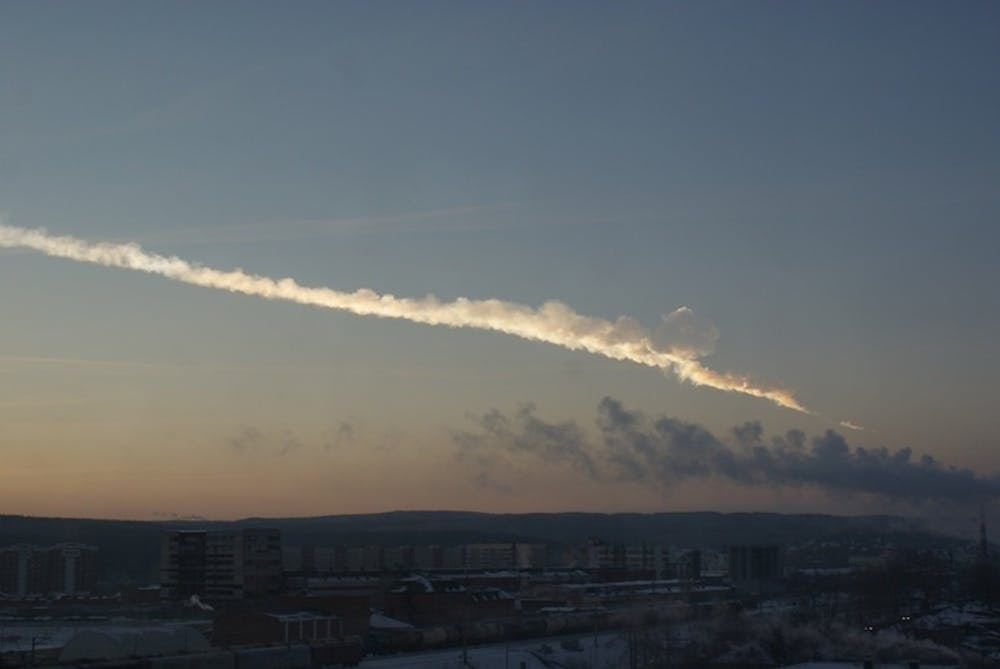The YouTube-famous Russian dashboard camcorders have regularly recorded road rage and tanks crossing streets, but even the most hardened of drivers did not expect to see a 55-foot wide meteor burning through the sky on the morning of Feb. 15, in Chelyabinsk, Russia. The meteor, which expelled 500 kilotons of energy and injured more than 1,000 people, was the largest recorded strike since a 1908 impact in Siberia.
The meteor struck the same day the larger, unrelated, 165-foot wide meteor DA14 narrowly missed the Earth. The meteor striking Russia is a once-in-a-century type of event, while a meteor strike from an asteroid as big as DA14 is likely to happen once in a millennium. The two events reminded many people, from Russian civilians to the United Nations’ Office for Outer Space, of the significant dangers meteors pose. The latter called for an increase in the currently underfunded international effort in asteroid early tracking and warning systems.
But if an asteroid were detected on an impact course with the Earth, there is little we could feasibly do to stop it, Assoc. Astronomer Prof. Ed Murphy said.
“If we discovered a large meteor even three years [before it would hit], there would be nothing we could do about it,” Murphy said. “The solar system is not a safe place.”
Preventing a meteor strike would require discovering the culprit asteroid far ahead of time, and engaging gravity tractors or asteroid pushers to change its course. Gravity tractors, as conceived by NASA, are extremely heavy spacecraft placed near an asteroid that produce sufficient gravitational force to change the asteroid’s orbit. Other asteroid pushers would employ mechanical force to similarly push or knock the asteroid out of orbit.
These instruments remain largely conceptual, but the main problem remains in detecting asteroids in the first place. Whether they are going to hit within a year or within a hundred years, it is extremely difficult. “[Detecting a possible meteor] is like us driving down the interstate and trying to track a bug before it hits our windshield,” Murphy said.
DA14 passed Earth multiple times before even being noticed, and today’s technology limits researchers’ ability to detect smaller asteroids, like the Russian meteor, that do not reflect enough light to be seen by telescopes.
Meteors, however, do not pose a frequent or particular risk to life on Earth, Murphy said.
“The risk of being killed by a meteor is far, far less than [the risk] of being killed by things you do in your everyday life, such as driving,” he said.
Despite their potential for destruction, meteorites prove to be valuable aesthetic and scientific tools. Small meteors that disintegrate in Earth’s atmosphere are responsible for shooting stars and brilliant meteor showers, and meteorites provide scientists with specialized insight into the age and history of the universe. The remnants of the Russian meteor are 4.5 billion years old and originated in the asteroid belt between Mars and Jupiter.







